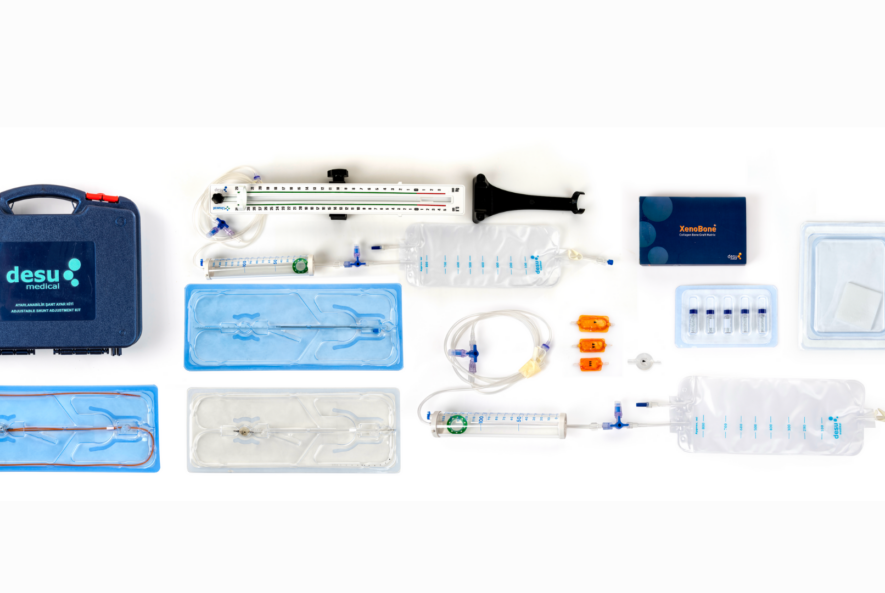
Understanding Hydrocephalus Shunts: A Guide for Parents and Medical Professionals
Hydrocephalus, a condition caused by an abnormal accumulation of cerebrospinal fluid (CSF) in the brain, can be a challenging diagnosis for anyone, especially parents of affected infants. Though it can affect individuals of any age, hydrocephalus is particularly concerning in babies, where it can impact brain development and quality of life. Thankfully, there are effective treatment options available, with shunt systems being one of the most common and reliable solutions.
This guide will walk you through the essentials of hydrocephalus and hydrocephalus shunts. We will explore hydrocephalus shunts types, what to expect during surgery, life with a shunt, and resources for support. Whether you’re a medical professional or a parent seeking answers, this comprehensive guide aims to provide clarity and confidence about the road ahead.
What is Hydrocephalus?
Hydrocephalus occurs when the body produces too much cerebrospinal fluid, or there is an issue with drainage or absorption. This excess fluid creates pressure on the brain, leading to symptoms such as headaches, nausea, developmental delays in infants, and gait disturbances in older individuals.
It is estimated that over 1 million Americans live with hydrocephalus, and it affects approximately 1 to 2 of every 1,000 infants born. Unfortunately, there is no cure for the condition, but with timely treatment, a normal and fulfilling life is possible for most patients.
The Role of Shunts in Hydrocephalus Management
Shunt systems are medical devices that help redirect and drain the excess cerebrospinal fluid from the brain to another part of the body, where it can be safely absorbed. They have been the gold standard for treating hydrocephalus for decades. While they cannot “cure” the condition, they are highly effective in managing symptoms and preventing further damage.
Studies have shown that shunt surgeries have a success rate of approximately 80% in improving patients’ quality of life. However, like any medical treatment, there are risks and considerations, which we’ll cover further in the guide.
Types of Hydrocephalus Shunts
Choosing the right type of hydrocephalus shunts depends on several factors, including the patient’s age, overall health, and specific condition. Below are the most commonly used types of hydrocephalus shunts:
1. Ventriculoperitoneal (VP) Shunt
The most common type of hydrocephalus shunts, VP shunts redirect excess fluid from the brain’s ventricles to the peritoneal cavity in the abdomen.
Pros:
- Effective for both infants and adults.
- Longer lifespan compared to other shunts.
- Allows the body to absorb excess CSF efficiently.
Cons:
- Risk of infection or blockage.
- Requires a skilled surgical team to implant.
2. Ventriculoatrial (VA) Shunt
VA shunts redirect the cerebrospinal fluid to the atrium of the heart.
Pros:
- Ideal for those who cannot tolerate VP shunts (e.g., due to abdominal scarring).
- Suitable for older patients.
Cons:
- Higher risk of complications involving the heart.
- Requires close cardiovascular monitoring.
3. Lumboperitoneal (LP) Shunt
LP shunts drain fluid from the lower back region of the spine to the peritoneal cavity.
Pros:
- Often used to treat rarer forms of hydrocephalus, like normal pressure hydrocephalus (NPH).
- Less invasive than other options.
Cons:
- May not be effective for all hydrocephalus cases.
- Increased risk of over-drainage complications.
Each type of shunt includes important trade-offs. A neurosurgeon will review various factors to recommend the most suitable option for the individual.
What to Expect During Shunt Surgery
Surgical Procedure
Shunt implantation is performed under general anesthesia. During the procedure, the neurosurgeon makes a small incision in the scalp and creates a pathway for the catheter (a thin, flexible tube). The tubing is carefully positioned to drain fluid from the ventricles in the brain to the selected drainage site (abdomen, heart, or spine). Some shunts may include a programmable valve to control the rate of fluid flow. The surgery typically lasts one to two hours.
Pre-Operative Care
Before surgery, patients or caregivers will meet with the healthcare team to discuss the procedure in detail, address concerns, and undergo necessary imaging scans. Infants and children may need preparation to ease anxieties surrounding surgery.
Post-Operative Care
After surgery, patients are closely monitored for any immediate complications. Mild symptoms like fatigue or localized swelling near the incision site are common. Recovery times vary, but most patients return to regular activities within a few weeks.
Living with a Hydrocephalus Shunt
Potential Complications and Warning Signs
While most patients adjust well to their shunts, some complications can develop over time. Common issues include blockage, infection, or over-drainage of CSF. Symptoms to watch for include:
- Persistent headaches.
- Nausea and vomiting.
- Sudden lethargy or confusion.
- Redness or swelling along the shunt tract.
Prompt medical attention is crucial if any of these symptoms arise.
Long-Term Care and Monitoring
Regular follow-up appointments are essential for monitoring hydrocephalus shunts function. On average, a shunt lasts 6–10 years before replacement becomes necessary. However, advances in technology are continuously improving hydrocephalus shunts durability.
For children, monitoring is especially critical as they grow; adjustments may be required to accommodate developmental changes. Parents should ensure their children have access to ongoing medical support and developmental assessments.
Resources and Support
Hydrocephalus can be overwhelming to manage, but numerous resources exist to help families and patients.
Organizations and Support Groups
- Hydrocephalus Association (hydroassoc.org): Offers educational resources, webinars, and community forums.
- Pediatrics Hydrocephalus Foundation (hydrocephaluskids.org): Focused on the needs of children and families.
- Brain and Spine Foundation (brainandspine.org.uk): Provides information about neurological conditions and patient support.
Additional Reading
- “Hydrocephalus Overview for Families” by the Hydrocephalus Association.
- Recent research on programmable hydrocephalus shunts and their impact on long-term outcomes.
Moving Forward with Confidence
Living with hydrocephalus might feel daunting, but with the right diagnosis, treatment, and support systems, patients can lead fulfilling lives. Hydrocephalus shunts offer a lifeline for individuals affected by this condition, improving their quality of life and providing peace of mind to caregivers.
If you or someone you care for is navigating life with hydrocephalus, remember that you are not alone. With advancements in treatment options and strong community support, there is always hope on the horizon.
We encourage parents and medical professionals to stay informed and proactive in managing this condition. Collaboration between caregivers, doctors, and patients is key to unlocking a brighter future.

